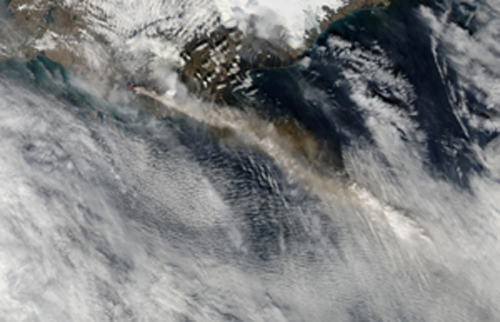Global General
EU proposes new rules on avoiding volcanic ash
(Agencies)
Updated: 2010-05-13 10:29
 |
Large Medium Small |

BRUSSELS - The European air safety agency proposed new procedures Wednesday that would drastically shrink the no-fly zone around volcanic ash particles - a move that should decrease future airspace closures and travel delays.
Daniel Hoeltgen, spokesman for the European aviation safety agency, said the new solution adopts the US practice of imposing a 120-mile (190-kilometer) no-fly buffer zone for all aircraft in the vicinity of any visible ash plume. This no-fly zone is hundreds of miles (kilometers) smaller than the one used now in Europe.
Many airlines criticized the European airspace closures as an unnecessary overreaction.
Flying directly through the plume of a volcanic eruption can damage jet engines, block a plane's sensor instruments and cause other damage. But there is scant evidence so far that the abrasive volcanic ash particles can cause damage it they are dispersed by the wind.
Nevertheless, the US and European systems for flying near ash differ fundamentally.
European aviation authorities have three zones - a vast no-fly belt stretching along the entire area where winds have spread the ash, a large additional buffer area where flying is also forbidden, and a clear-air part where aircraft can fly normally.
This method caused the blanket closure of almost all of European airspace when prevailing winds carried the ash from Iceland eastward over the continent in April.
In contrast, in the United States, flying is forbidden only the area where the volcanic plume is densest and in a 120-mile (200-kilometer) buffer zone.
"I can confirm that the agency has been discussing a new solution to the renewed threat of airspace closures due to the volcanic ash cloud," Hoeltgen said.
The US Federal Aviation Administration, the European Commission, airlines and national aviation authorities have been involved in the talks, he said. The change still has to be approved by the EU 27 national aviation regulators and the European Commission.
A new eruption from Iceland's Eyjafjallajokul volcano disrupted air traffic between North America and Europe again over the weekend. Ash also floated over the Iberian Peninsula and other parts of southern Europe, eventually touching the North African coast in Morocco before starting to disperse.
Eurocontrol, the continent's air safety management agency, said small areas of high ash concentration at lower altitudes were still causing difficulties on Wednesday for trans-Atlantic flights. They were also affecting the mid-Atlantic islands of Madeira and the Azores.










